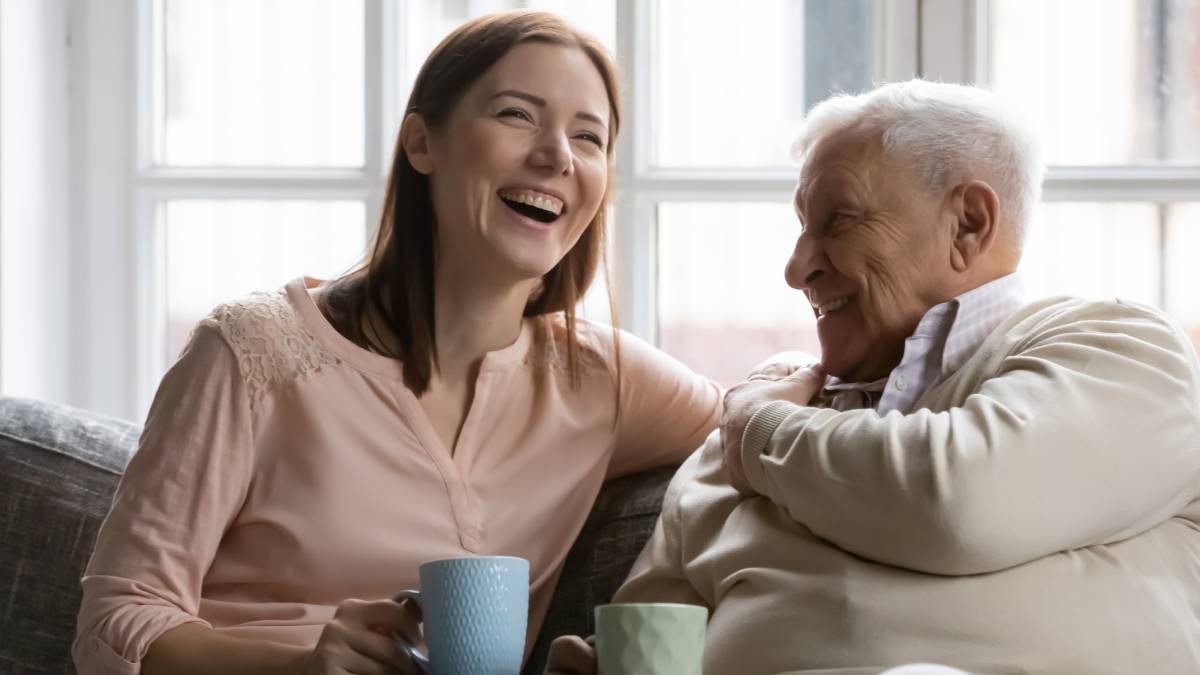Isis Pattison had been struggling for months to find an affordable rental in her hometown of the Blue Mountains in New South Wales.
“I don’t know how many applications I put in. It was ridiculous,” the 24-year old told Hack.
One day she went to see a property with her grandma, Debbie.
“It was called a yurt, this property she was [looking at],” Debbie explained. “It was round and connected by a little pathway. And they wanted $370 a week for it.”
Debbie was shocked. So she suggested Isis move in with her instead.
“I said, you can live with me and save that $370.”
It was a financial arrangement that would benefit them both.
“I’ve been on my own now for nearly eight years. It’s been very lonely and expensive on my own,” Debbie said.
Cost of living had hit Debbie hard. She was struggling to pay for essentials like heating and electricity, and cutting back on the quality of the food she was buying.
Debbie was worried that she’d be forced to sell the house she’d lived in since 1981 and move to a cheaper area away from her family and friends.
Though she doesn’t pay rent, living with Isis has meant all of Debbie’s bills are halved.
“It’s a big help. I’m grateful and happy that she’s here. I think my standard of living is a little bit better. I’ve got the heating on now,” Debbie said.
Isis, who plans to go back to university to study nursing, says the arrangement means she can save money, too.
But more than that, she really loves spending time with her grandmother.
“I think it really works for us as well,” Isis says.
“Because we’ve always just had a good connection, we understand each other, which makes it a lot easier.”
The boomerang generation
Around one in four young people who had previously moved out of the family home returned during the COVID pandemic, according to the Australian Institute of Family Studies.
Multigenerational living – where more than one generation of related adults live together — is now fairly common in Australia.
“It’s about one in every five people,” Edgar Liu from the University of New South Wales said.
“The most common [reason] was cost of living and finance. That encompasses a whole range of things from sharing bills, or finding better value and sharing costs.”
Housing affordability was a major factor in why young adults in their 20s and 30s move back home, according to Dr Liu’s research.
He said there isn’t a lot of data into how common it is for young people to move back in because their parents or grandparents are struggling to make ends meet, but his research did find multigenerational living was more common in low-income households.
Multigenerational living was also more common in different cultures, and in families that had previous experience of it.
For example, an adult is more likely to move in with their parents if the parents had also lived at home as an adult.
“We asked people what they liked the best and what they didn’t like in terms of that kind of arrangement,” Dr Liu said.
“Even though most people did it for financial reasons, that wasn’t one of the things that they liked the best. That was kind of well down the list.
“What they liked the most was the companionship that they have with each other. It’s more just the fact that if you go home, it is not completely empty.”
Multigenerational living expected to increase
Dr Liu said there’s evidence from overseas that would suggest this form of living is here for a while longer.
“Going back to the global financial crisis, for example, both in the US and the UK reported a doubling in the speed of growth of this kind of arrangement in the first couple of years before it peters back down to a normal kind of level,” he said.
“We’ll see this continue happening for a whole range of different reasons.”
But the housing market isn’t keeping pace with demand.
The design of our homes “creates or adds to the challenge” of multigenerational living, Dr Liu said.
“It’s not necessarily just about the size of the property; it’s about the design as well.”
Dr Liu explained that design aspects like open plan living, which are popular at the moment, might not suit several adults living in the same space.
“[We need] some some kind of flexibility in terms of those kinds of things. Whether it is a sliding door, whether there is an actual separate space,” he said.
“A lot of councils now actually allow for granny flats, and those actually help a lot.
“There’s a slight physical separation without being too far from each other.”
 2020 Australian Broadcasting Corporation. All rights reserved.
2020 Australian Broadcasting Corporation. All rights reserved.
ABC Content Disclaimer

